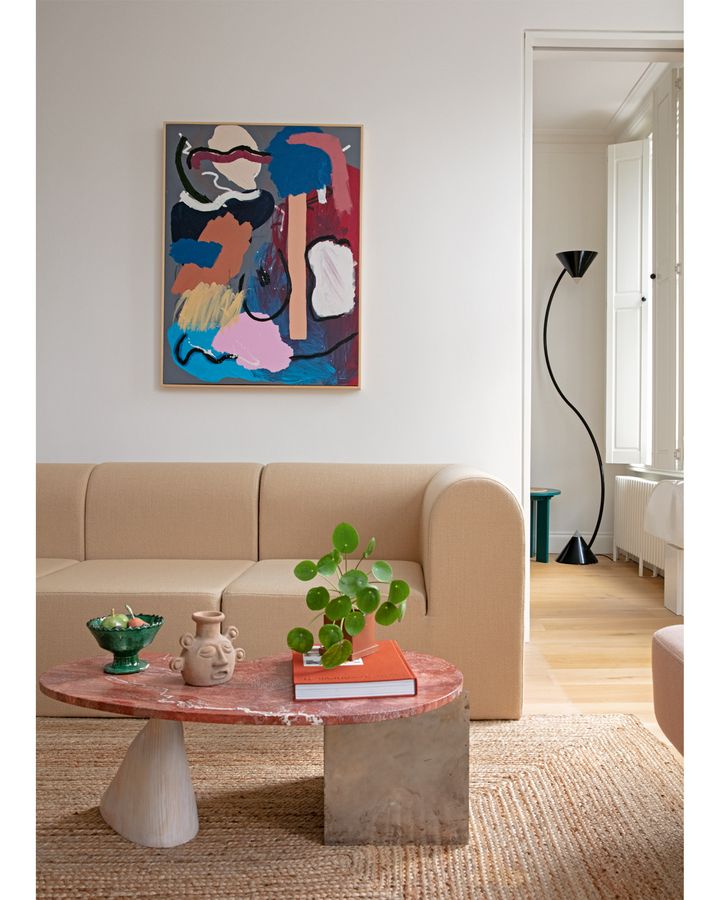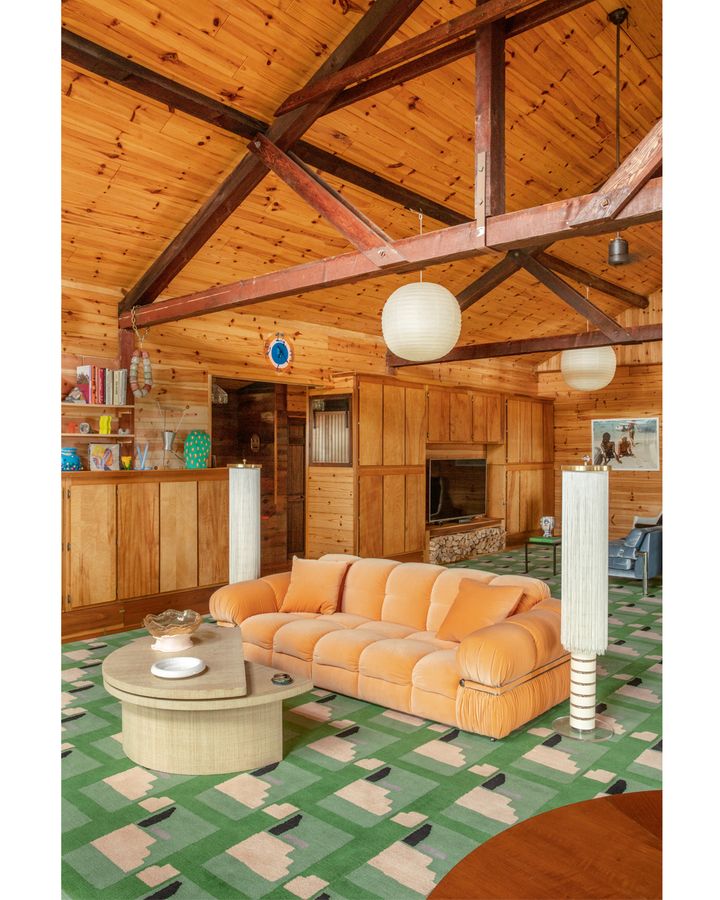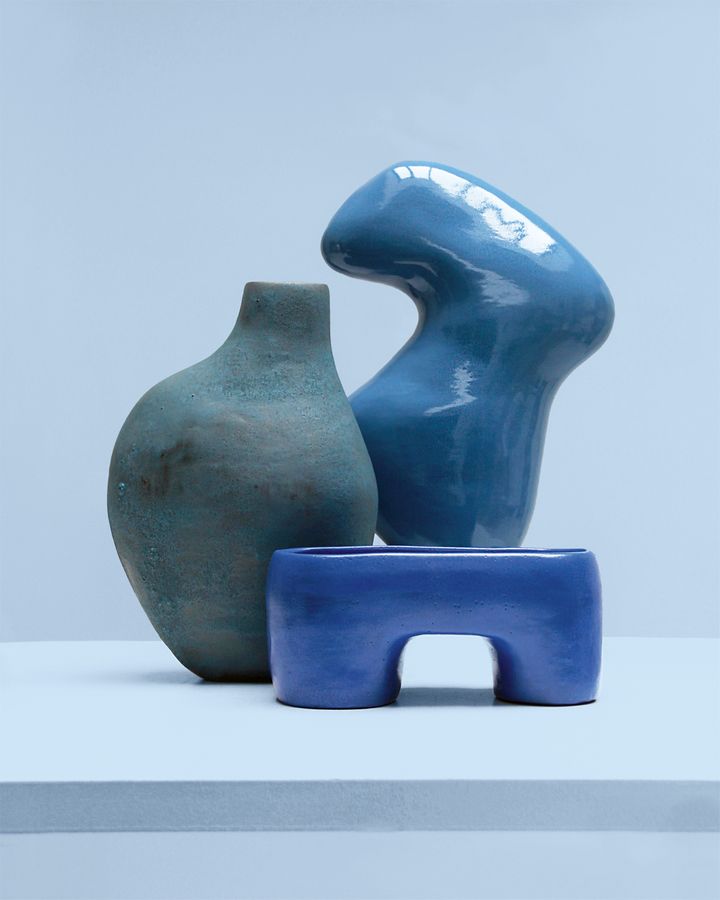How to sleep well and be happy at home

It’s no secret that the spaces we inhabit affect the way we feel. From feng shui to the Scandinavian pursuit of hygge, designing the look and layout of your abode to further a sense of wellbeing is a long-established idea. Yet, environmental psychology – the study of the human relationship to surroundings – was not recognised as an academic field until the late 1960s, and is an even more recent consideration when it comes to domestic interior design.
More like this:
– Inside eight interior designers’ homes
– The vintage French style resonating now
– Why living with plants is good for you
“The idea of improving wellness through our indoor spaces is something that has burgeoned,” Jean Whitehead, senior lecturer in Interior Design at Falmouth University and author of Creating Interior Atmosphere: Mise-en-scène and Interior Design, tells BBC Culture. “It was already prevalent in healthcare interiors, but now it’s crossing over into hospitality and leisure spaces, as well as how we think about our homes.”
Our collective interest in wellness, Whitehead notes, has been accelerated by the pandemic. Rather remarkably, Europeans have been found in surveys to spend up to 90% of their time indoors, and, during lockdown, “indoors” for most of us came to mean “at home”. Because of this, many of us began to care less about how our abodes looked, from a trends perspective at least, and more about how they made us feel. As a result, a new, more sustainable stance on interior design has begun to take hold, centred around individuality, mindfulness and self-care.

The book How to Live with Objects explores ways we can make our living spaces reflect our personalities and promote happiness (Credit: Charlie Schuck/ Clarkson Potter)
For Monica Khemsurov and Jill Singer, the founders of online design magazine Sight Unseen, the pandemic brought about a newfound appreciation for the myriad objects they had both accumulated over the years. “We were sitting in our homes and our objects were really bringing us comfort, and making us feel less lonely,” Khemsurov tells BBC Culture. This sparked the idea for the duo’s book, How to Live with Objects: A Guide to More Meaningful Interiors, published this week, in which she and Singer offer up their tips on “how to maximise the visual and emotional impact of your space” through objects.
This involves taking a more intentional approach to both acquiring and living with objects, prioritising heartfelt connection over what Khemsurov dubs a “keeping up with the Joneses” attitude. “It’s the basic idea that an object can very easily become imbued with meaning and memories,” she says. Whether it’s something a friend made you which reminds you that you are cared for, or a nick-nack purchased while travelling abroad, she observes, objects allow us to relive moments, or feel closer to loved ones, at a glance. “In terms of the aesthetic of the object, we tend to be quite agnostic,” Singer adds. “The whole point is building an interior around your personality.”
Surrounding yourself with treasured objects is, of course, only one piece of the puzzle when it comes to compiling a personal space that makes you feel good. Lindsay T Graham, a personality-and-social psychologist specialising in how we affect – and are affected by – the spaces we inhabit, suggests taking an intuitive stance right from the start. “First, go into the space, and look at how it currently makes you feel,” she tells BBC Culture. “Don’t overthink it, just ask yourself, ‘Am I feeling stressed? Or happy? Am I ready to wind down? Or am I amped up?’ Then take a step back and think about what you want to be feeling. Noticing the mismatch between the two will offer clues to what needs to be shifted in order to create an environment that’s really going to support you.”
Home sweet home
From there, it’s all about selecting the right tools to achieve the desired psychological effect. One element is lighting. “Lighting can transform a space instantly,” says Graham. “Plus, there’s been so much research about its influence on our circadian rhythm, which impacts both our mental and physical health.” Much of this research centres on using different coloured lights to incite different moods. “You can buy warm or cool light bulbs,” environmental psychologist Sally Augustin, PhD, tells BBC Culture. “If you’re trying to create a calming atmosphere where people will enjoy spending time together, for example, you want a warmer, softer light, whereas for something that requires concentration, you want the light to be cooler and more intense.” Warmer light is most effective when emitted from a lower level – “say, from tabletop or floor lamps” – Augustin explains, while cool bulbs should be placed in ceiling fixtures or overhead lighting sockets.

Colour, texture, lighting and choice of objects are all factors in creating a feel-good home (Credit: Charlie Schuck/ Clarkson Potter)
Likewise, textures can powerfully alter our emotional response to a space. “If you stick to one basic texture, particularly one known to make us feel good, you’ll get a more relaxing effect. And if you use multiple textures, you add a little more energy into the space,” says Augustin. “Studies have found that soft textures – like the materials that baby clothes are made from – are most relaxing to feel.” It is also helpful to consider textiles’ acoustic influence on a room, she explains. “When you’re designing, remember to consider all of the sensory implications. In your living room, if you have at least one rug, upholstered furniture and curtains on the windows, those softer surfaces will absorb sound and prevent echoing, creating a more pleasant environment.”
Another easy way to cultivate calm at home? “Any time you can bring nature into the equation is a win,” says Graham. “Plants are great,” says Augustin, “especially green, leafy ones with curving leaves and stems.” But, she adds, naturalist or biophilic design extends far beyond plants and views of nature. “We tend to find curving lines most relaxing – either in two-dimensional patterns, or in three-dimensional forms, like the shape of the back of a couch – as they evoke forms we find in nature. While natural materials, particularly unpainted wood, are really great for keeping our stress levels in check.”
How we want to feel at home, however, will inevitably vary depending on the space we’re inhabiting and how we’re using it at any given time. If you’re accommodating multiple people within a space, for instance, you may wish to position your furniture to promote better conversation, Graham explains. “To create cosiness and the ability to connect with others, we want our furniture facing each other,” she says. While Augustin notes that “if you want to encourage the most collegial, convivial interaction, everybody involved should be seated at more or less the same height. It’s the same as the advantages of a round versus a rectangular dining table.”
There are plenty of other ways to tap into the psychology of space. “Colour can be very impactful,” says Augustin, “Something light and not very saturated will have a calming effect – a sagey green with lots of white mixed into it, say – while warm colours can spur our appetite and make people appear friendlier to one another.” Objects can similarly set the mood of a space, says Graham, “whether that’s a piece of furniture, an artwork or a specific thing that lights you up, and you can use that feeling to anchor, or drive the momentum of the whole room.” Singer also suggests shuffling objects around to recontextualise them – “maybe move something somewhere unexpected like a bathroom, or place a chair at the end of the hallway.”

We are instinctively drawn to curvy, organic shapes in objects and furniture because they reflect the natural world (Credit: Charlie Schuk/ Clarkson Potter)
When it comes to getting a better night’s sleep, meanwhile, the way you arrange your bedroom can, of course, make all the difference. “You need to think about your night-time behaviours and routine,” says Graham, “and what’s going to put you into the best space to shut out the thoughts or anxieties of the day.” This can range from surrounding yourself with warm lighting and soothing textures to making sure that your work space – which may remind you of pending tasks – is hidden from sight. The same goes for visual clutter, which, according to Augustin “is stressful generally, and in the context of trying to fall asleep is particularly problematic”. And a clear view of the door to your bedroom can make you feel calmer, she says. “That goes back to our basic survival instincts and seeing the entry point to our space.”
However you’re looking to adjust your space to better support your needs, experts advise us to view our homes as idiosyncratic and constantly evolving organisms – just as we ourselves are. “Assembling and curating an interior that makes you feel good takes time,” says Whitehead. “It’s a process of trial and error that should continue throughout our lifetimes”.
Khemsurov agrees. “We say in the book that you shouldn’t treat your home like a museum,” she says. “If you set it a certain way and never touch it again, that doesn’t leave space for you inside your own home. The more you touch and interact with your space, the more connected to it you become.” The magic of personal spaces, no matter how big or small, is that they have the ability to “really transform our emotions and who we are,” concludes Graham. “And if we take the time to be mindful about that, it’s a really powerful means of living more functionally, while feeling more fulfilled.”
If you would like to comment on this story or anything else you have seen on BBC Culture, head over to our Facebook page or message us on Twitter.
And if you liked this story, sign up for the weekly bbc.com features newsletter, called The Essential List. A handpicked selection of stories from BBC Future, Culture, Worklife and Travel, delivered to your inbox every Friday.








